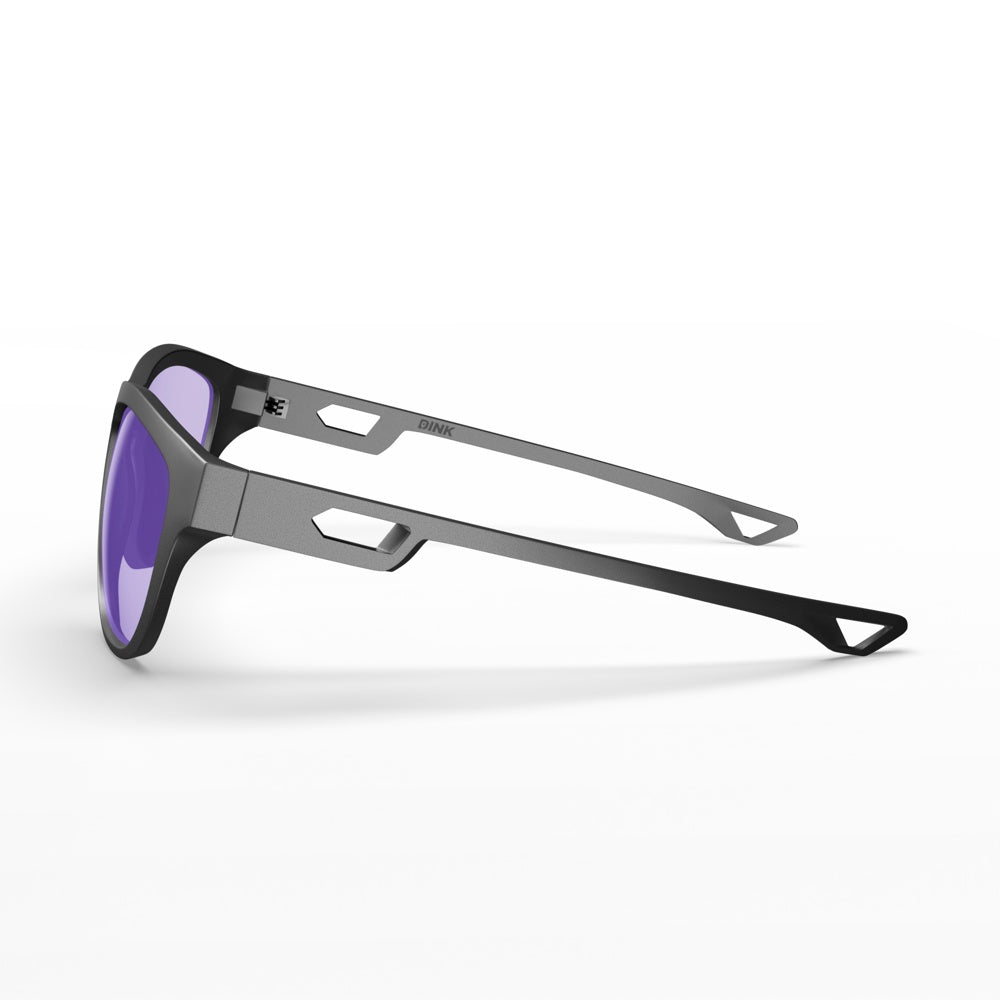Indoor pickleball is visually tricky: bright LED lighting, shiny floors, light walls, and fast rallies at the kitchen line. If you’ve ever lost the ball for a split second on a drive or missed the depth on a lob, your eyewear may be the reason—not your reflexes. Dink’s ColorBoost™ system is built around three performance tints—Natural, Violet, and Green—so you can pick the right contrast for your ball color and lighting.
Start with Natural for LEDs and low light.
Under artificial lighting, most players need clarity more than darkness. Natural keeps color fidelity and edge definition high without over-dimming the scene, which helps you see spin, bounce height, and approaching pace sooner. That “just-right” transmission is why Natural is the go-to choice for most indoor facilities and for evening or early-morning play. Learn more about how Dink balances brightness and contrast here: Technology and What Lens Tint Is Best?.
Choose Violet when the ball is warm-tone (red/orange/pink).
Plenty of clubs rotate ball colors. When your league uses red, orange, or pink balls (or you’re on a warmer-tone court), Violet locks in separation so the ball doesn’t blur into the background. It’s still a medium-light, non-polarized sport tint, so you keep stable depth cues under LEDs without the distortions that very dark or polarized lenses can introduce. See how Dink maps tints to ball color in this quick guide: Indoor/Lighting Tips.
Use Green for green/yellow balls in brighter indoor venues or mixed sessions.
When your facility is exceptionally bright (new LEDs, light walls, lots of glass) and you’re using green/yellow balls, Green adds crisp micro-contrast while holding onto true ball color. It’s also a smart pick if you bounce between indoor and sunny outdoor play on the same day and don’t want to swap lenses. For a deeper overview of the three-tint system, check: What Lens Tint Is Best?.
A quick decision tree for indoor players
-
LEDs / low light, any ball color → Natural (universal clarity, no over-darkening)
-
Warm-tone balls (red/orange/pink) → Violet (locks contrast on colored courts)
-
Bright indoor with green/yellow balls → Green (extra separation in high brightness)
Frames that keep optics locked in place.
Contrast only helps if your eyewear stays put. Dink’s wrap-fit frames widen peripheral vision, and grippy nose pads/temples resist slipping during split-steps and hard stops. Explore fit options—Petite, Small/Medium, and Pro wraps—to get a stable platform for your optics: Pro Series Collection and Daytona Petite.
Why medium-light beats “super dark” indoors.
Very dark tints can erase the fine details your eyes need for depth perception—especially under LEDs. Dink’s medium-light, non-polarized approach preserves texture, court lines, and ball edges so your brain processes motion earlier. The result is less squinting, fewer misreads, and more confident hands at the kitchen.
Pro tip: If you play leagues where ball color changes, build a two-lens kit—Natural for standard indoor nights, Violet for warm-ball weeks. If you split time indoors and outdoors, consider Green as your crossover lens.
Upgrade your indoor vision today with Dink’s ColorBoost™ tints and sport-engineered frames: Pro Series • Technology • Lens & Frames Guide
Excerpt:






